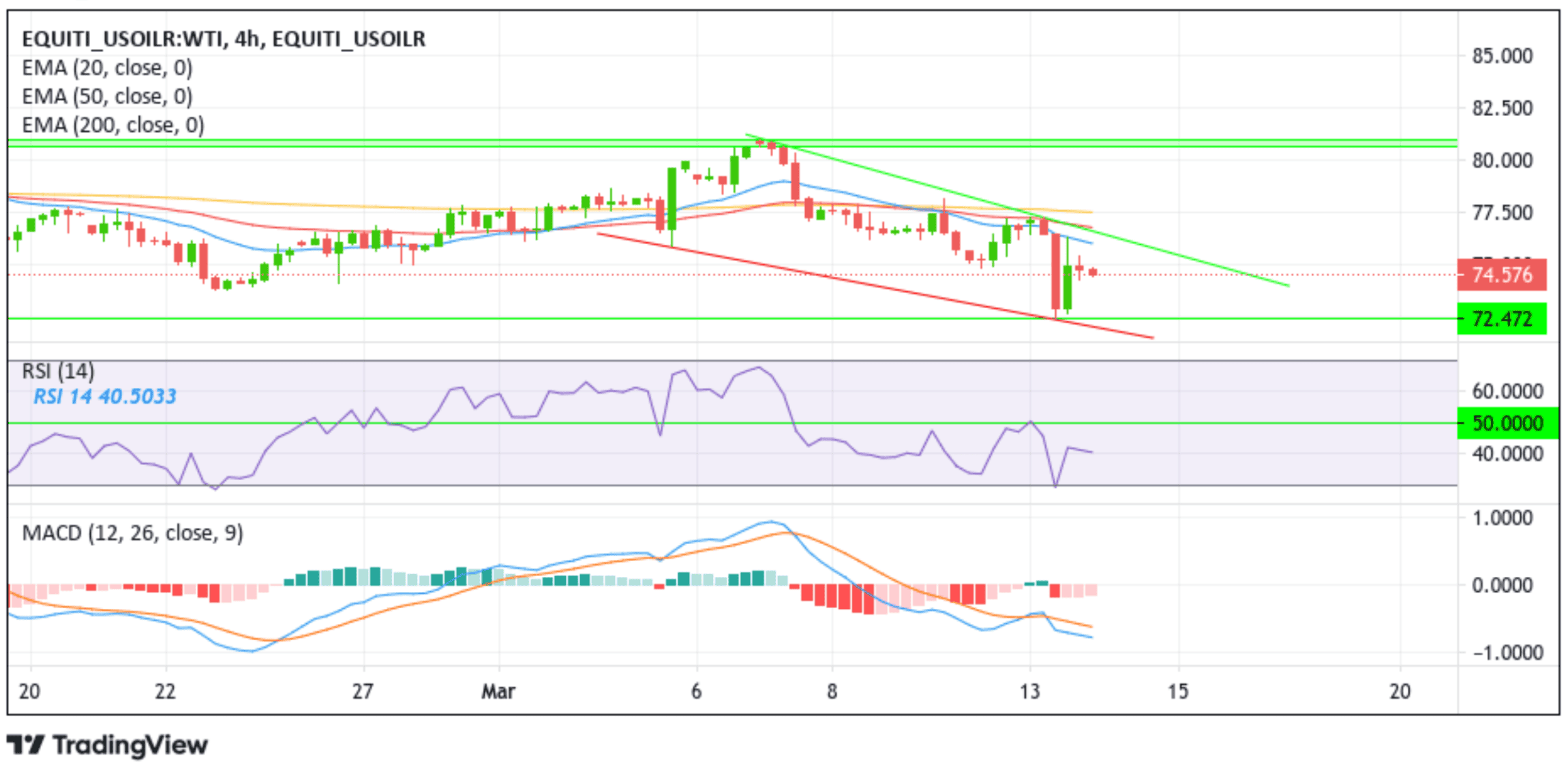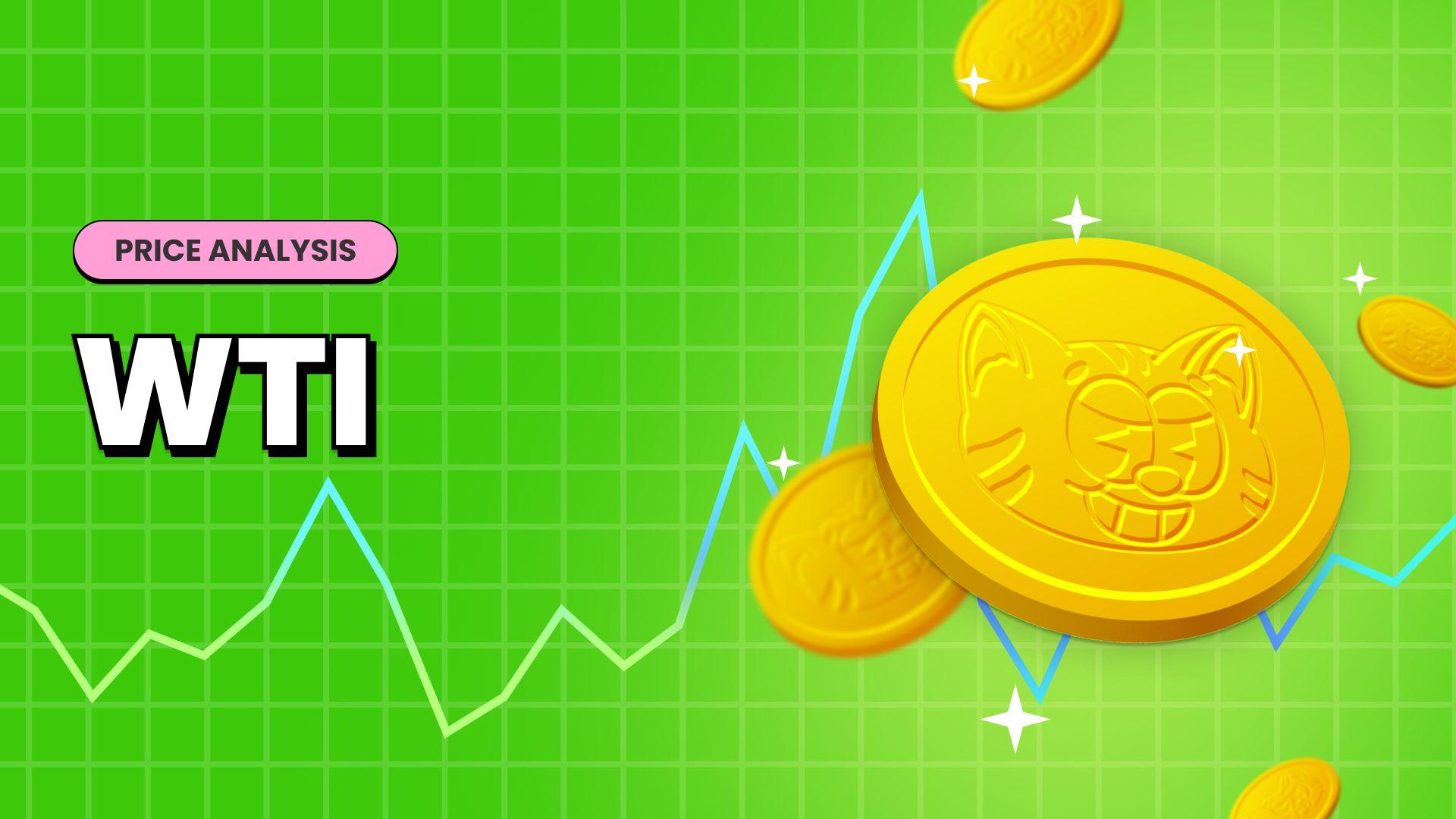US WTI Crude Oil Eases Further Below $75 Per Barrel As Banking Fears Rattle Markets, US CPI In Focus






- US WTI Crude oil futures edge slightly lower on Tuesday below $75 per barrel
- Silicon Valley Bank collapse sends fears across the financial spectrum, in turn, weighs down on crude oil demand
- Expectations for aggressive rate hikes by the Fed underpin the U.S. Dollar, in turn, caps oil prices from further upside move
- Markets now await the release of the key U.S. inflation data for fresh directional impetus

US WTI crude oil futures edged slightly lower on Tuesday during the early Asian session as the collapse of Silicon Valley Bank, One of America's most prominent lenders, disturbed financial markets and raised fresh worries of a financial crisis. As per press time, US WTI crude oil futures was down 0.19%/14 cents to settle at $74.49 per barrel, while its counterpart Brent crude futures were also down 0.29%/23 cents to settle at $80.39 per barrel.
U.S. regulators shuttered Silicon Valley Bank on Friday after the Bank failed to raise more than $2 billion in capital to offset losses from bond sales. Fears of contagion from the failure of Silicon Valley Bank led to a heavy sell-off in U.S. assets at the end of last week, and state regulators officially closed the New York-based Signature Bank (SBNY.O) on Sunday.

U.S. authorities, however, launched emergency measures on Sunday to shore up confidence in the banking system. The Biden administration went ahead and assured investors there won't be a relapse of the financial crisis from 15 years ago with America's President Joe Biden specifically requesting Congress to review and strengthen post-financial crisis banking laws that were loosened by the previous administration "to make sure that the crisis we saw in 2008 would not happen again," Biden said. The government will ensure the bank deposits of Americans remain safe and the country does not experience another financial crisis. President Joe Biden told reporters at the White House. "No losses of a dime … No losses will be borne by the taxpayers," the president said. "The money will come from the fees that banks pay into the Federal Deposit Insurance [Corporation, or FDIC]. Because of the actions taken by regulators, every American should feel confident, their deposits will be there if and when they need them."
That said, The sudden shutdown of SVB Financial (SIVB.O) triggered concerns about risks to other banks resulting from the Fed's sharp rate hikes over the last year. It has also spurred speculation about whether the central Bank could slow the pace of its monetary tightening.
Additionally, the yield on the 2-year Treasury note fell sharply on Friday following the shutdown of the Bank, sparking a flight to safer assets such as government bonds. The yield shed at least 46 basis points over two days, a sudden decline not seen since September 2008, when the markets were in the throes of the global financial crisis. The dollar index, which measures the greenback against six other currencies, fell nearly 1% following the short-dated Treasury yields tumble but recovered some of its losses in the late New York trading session on Monday and ticked up to settle above $103.700s. A stronger greenback makes oil expensive for holders of other currencies and typically undermines oil prices.

That said, worries about further Fed monetary tightening have been limiting crude oil prices after a string of data in the past few weeks suggested the fed will likely stick to high-interest rates to tame inflation in the U.S. Fed fund futures are now pricing in a 70.1% probability of the Fed hiking its interest rates by 50bps lifting its overall target rate to 5.00%.
Investors now look forward to today's key inflation data seen higher at 6% year on year in February from 6.4% in January and 0.4% for the month versus a previous 0.5%. Core CPI, a reading that strips out volatile food and energy prices, is forecast to have risen 5.5% from the previous annual reading of 5.6% for the year to February. Month-on-month, the core number is expected to be flat at 0.4%. The inflation data will significantly affect the USD strength, depending on the outcome, and we could see oil prices rising or falling.

Technical Outlook: Four-Hours US WTI Crude Oil Price Chart

From a technical perspective, the price extended a modest rebound from the vicinity of the 76.229 level after the price's inability to find acceptance above the 20 (blue) Exponential Moving Average at the 76.233 level. Sustained weakness will drag spot prices toward the 72.472 key support level. A break below this level would pave the way for a drop toward retesting the key support level plotted by a downward-sloping trendline extending from the early March 2023 swing low. A break below this level would pave the way for more losses around crude oil prices.
All the technical oscillators are holding in the negative territory as both the RSI (14), and MACD crossover are below their signal lines, indicating a sign of bearish price action this week. The bearish bias is supported by accepting a price below the technically strong 200 (yellow) EMA level at $77.463. The 50 (red) and 200 (yellow) EMA crossover at the $77.797 level adds credence to the bearish bias.
On the flip side, if dip-buyers and technical traders jump in and trigger a bullish turnaround, the price will face resistance at the 74.875 support level. On further strength, the focus shifts toward retesting the key resistance level plotted by a downward-sloping trendline extending from the early February 2023 swing high. If buyers pierce above this ceiling, the bullish uptick could gain momentum but would face initial resistance at the 50 and 200 EMA levels at the 76.724 and 77.475 levels, respectively. Acceptance above these levels would negate any near-term bearish outlook and pave the way for more gains around crude oil prices.

